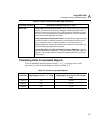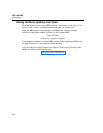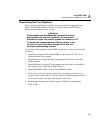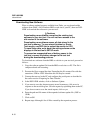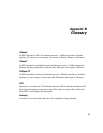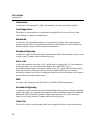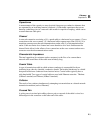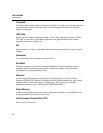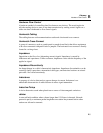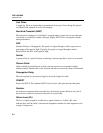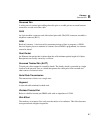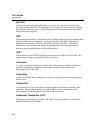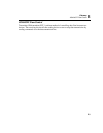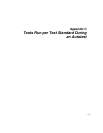
Glossary
Hardware Flow Control
B
B-5
Hardware Flow Control
A hardware method of controlling data flow between two devices. The receiving device
tells the sending device to start or stop data transmission by sending control signals on a
cable wire that is dedicated to flow control signals.
Horizontal Cabling
The cabling between a telecommunications outlet and a horizontal cross-connect.
Horizontal Cross-Connect
A group of connectors, such as a patch panel or punch-down block, that allows equipment
to be cross-connected with patch cords or jumpers. The horizontal cross-connect is usually
located in a wiring closet.
Impedance
Opposition to the flow of ac (alternating current) signals. Impedance is caused by
inductance and capacitance. Unlike resistance, impedance varies with the frequency of the
applied ac signal.
Impedance Discontinuity
An abrupt change in a cable’s characteristic impedance. Impedance discontinuities can be
caused by faulty connections, mismatched cable types, and untwisted sections on twisted
pair cable. Also called an anomaly.
Inductance
A property of a device that tends to oppose changes in current. Inductance is an
undesirable characteristic of cables because it causes signal attenuation.
Inductive Pickup
A device that emits sound when placed near a source of electromagnetic emissions.
Jabber
A network fault condition where a frame longer than 1518 bytes is detected. Network
protocols specify a maximum packet length that one station may transmit before other
stations are allowed to transmit.



